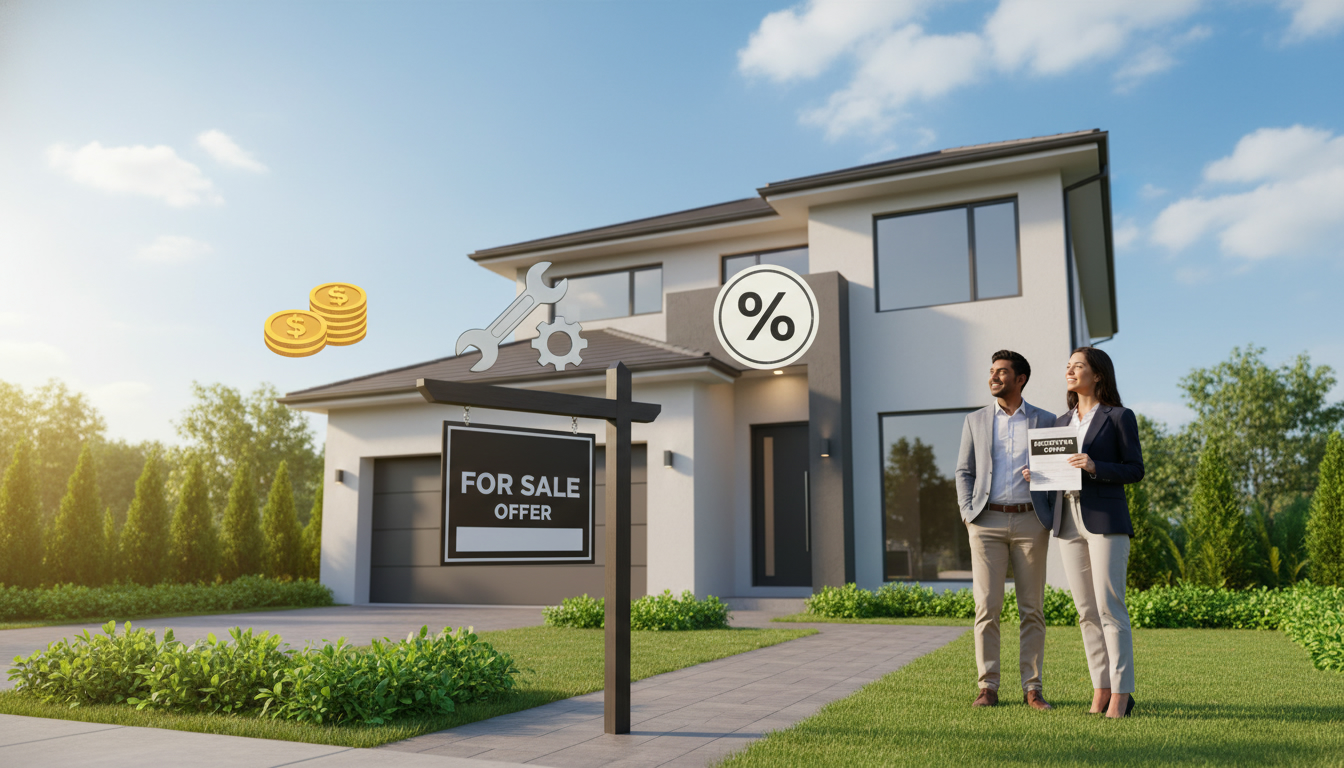Can I sell for more if I offer incentives?
Want to sell for more by offering incentives? Here’s how to turn perks into profit.
How incentives move price and buyer intent
Yes — when used correctly, incentives change buyer behavior. They expand the pool of qualified buyers, speed up offers, and reduce time on market. That creates competition. Competition drives price.
This isn’t fluff. Think of incentives as marketing fuel. A seller credit, rate buydown, or included appliance can convert a hesitant browser into a competitive bidder. The key: design the incentive to solve the buyer’s pain point.
Incentives that actually increase sale price
- Closing cost credit: Lowers buyer cash needed. Works best with first-time buyers or when rates make monthly payments tight.
- Rate buydown: Reduces monthly payments. Often pulls buyers off the fence in rising-rate markets.
- Offer to pay for minor repairs or a home warranty: Removes inspection objections and speeds closing.
- Small renovation or staging credit: Improves perceived value without heavy upfront seller cost.
Real-world example: a $5,000 closing credit in a $500,000 market can win multiple offers. If competition pushes the final price up $8,000–$12,000, you net more than the credit.

Quick math (simple, transparent)
Scenario: List at $500,000.
- No incentive: Single offer at $490,000 after 30 days. Net proceeds = $490,000.
- With $5,000 closing credit + aggressive marketing: Two offers, highest $505,000. Net after credit = $500,000.
Net gain = $10,000 vs. original. That’s a 2% improvement on price for a $5,000 outlay.
That’s how incentives become investments, not giveaways.
Appraisal and negotiation traps to avoid
- Appraisal gap: If the appraisal comes in below the higher offer, the buyer may need to bring extra cash or renegotiate. Build an appraisal strategy: price competitively, provide comparable sales, and consider an appraisal guarantee clause.
- Perception risk: Overusing incentives can signal a weak market. Use short-term, targeted incentives instead of permanent price padding.
How to structure incentives so they boost net proceeds
- Identify the buyer type (first-time, investor, trade-up).
- Pick one focused incentive that solves their main friction.
- Cap the incentive (e.g., $5,000 max) and advertise it clearly in MLS.
- Timebox the incentive (offer valid for first two weeks).
- Track responses and compare offers — adjust if needed.
Bottom line: Use incentives like tactical ad spend
When targeted, modest incentives act like ad spend that produces a measurable return. They don’t magically raise value. They create buyer urgency and reduce friction, which often leads to higher offers and better net proceeds.
For a tailored pricing and incentive strategy in your neighbourhood, talk to Tony Sousa — local expert on Pricing & Market Value. Tony will run the numbers, craft the right incentive, and protect you from appraisal risk.
Contact: tony@sousasells.ca | 416-477-2620 | https://www.sousasells.ca





















